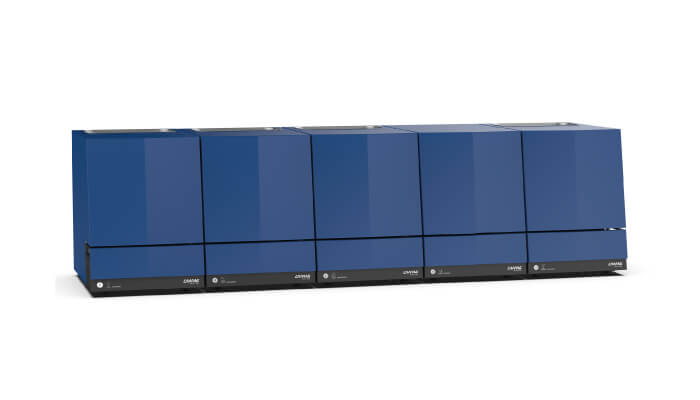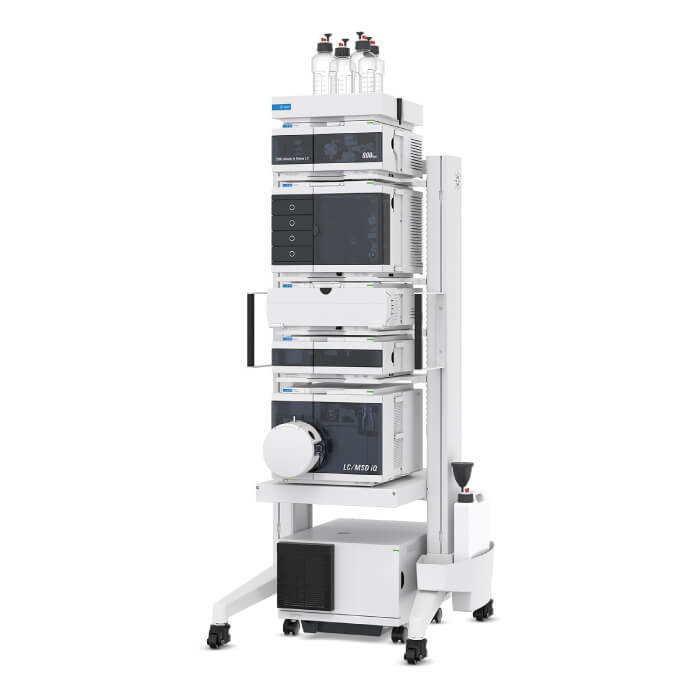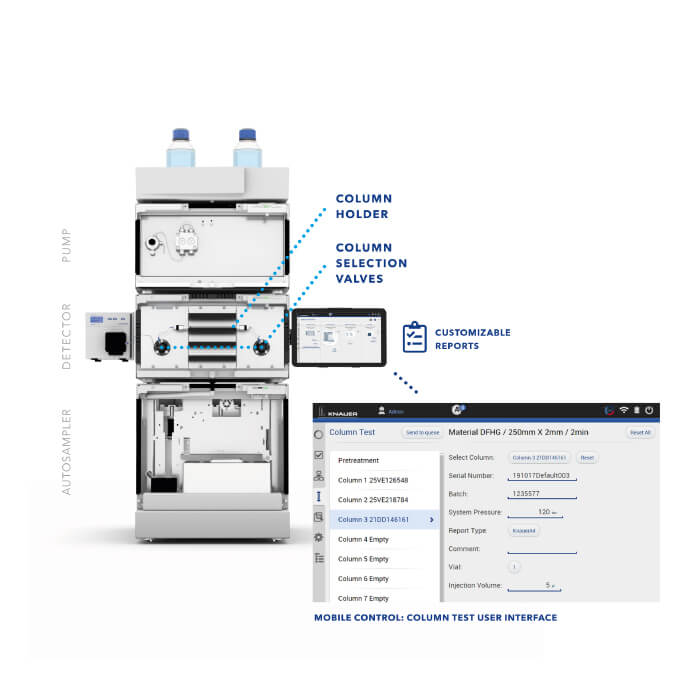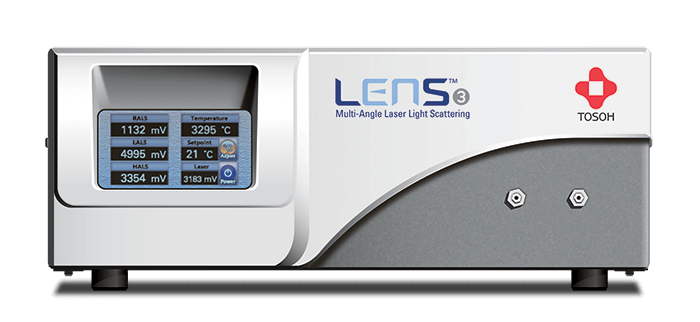Sponsored Feature
With the launch of HPTLC PRO in September 2019, CAMAG has introduced nothing less than a revolution in analytical science: the world’s first fully automated high-performance thin-layer chromatography (HPTLC) sample analysis and evaluation system, elevating HPTLC to the next level in routine analytics.
When employing HPTLC PRO, manual intervention is no longer required. Once the sample rack is loaded, the reagents are prepared, and the required analysis parameters are set in the visionCATS software, the system is ready and the user can start the fully automated HPTLC process with a single mouseclick. Consisting of modules for each step of the HPTLC process, the system loads an empty 20 x 10 cm HPTLC glass plate from the dedicated module and the built-in conveyor transports it from one module to the next. After analysis, the conveyor moves the plate back for storage.
Using patented technology, the HPTLC PRO System is capable of autonomously running analysis sequences involving up to five HPTLC glass plates, allowing a throughput of up to 300 samples per day (15 to 20 plates per day).
The HPTLC PRO System produces reproducible and reliable results. New chamber geometry revolutionizes the development step as the gas phase can be actively circulated during development (conditioning), allowing the separation of target analytes to be further optimized.
Hyperspectral data with a range from 200 to 1000 nm are used to characterize and quantify all analytes. Substance confirmation by HPTLC-MS is likewise possible. All HPTLC steps are software controlled. The location of the plate is known at all times due to the specialized plate carrier, making the entire HPTLC analysis traceable and cGMP compliant. Full automation throughout the entire process makes the system highly efficient, while a significantly reduced solvent consumption keeps operating costs low. By employing HPTLC PRO, the already economical HPTLC technique becomes even more cost efficient when compared with other analytical systems.
The CAMAG® HPTLC PRO System will be launched sequentially over the next two years.
Explore the next dimension of high-performance thin-layer chromatography here...

The Agilent InfinityLab LC/MSD iQ is the newest and smartest mass-selective detector on the market today. The intuitive and compact instrument is the perfect partner for labs performing small molecule analysis in pharmaceutical drug discovery, development, quality assurance/quality control and academic, chemical and food labs that require mass spectral data to make key business decisions.
The LC/MSD iQ is specifically designed for chemists, chromatographers and new users striving for more certainty in their LC-based results. The new Auto Acquire mode sets up the acquisition details and simplifies the learning curve. The InfinityLab LC/MSD iQ incorporates instrument health tracking, utilizing embedded sensors to ensure robust and reliable operation, and reports system performance. In conjunction, an overall evaluation of the entire LC-MS system is completed with a system suitability check. With a drive toward maximizing lab productivity, early maintenance feedback features help lab managers plan routine maintenance in line with their lab’s schedule.
The InfinityLab LC/MSD iQ resides beneath the LC system, saving valuable bench space. The versatile Agilent 1260 Infinity II Prime LC system is a perfect front end for your LC/MSD iQ system. This LC system has the highest functionality and operational convenience for analytical HPLC and UHPLC separations at pressures up to 800 bar with quaternary and ternary solvent mixing. The 1260 Infinity II Prime LC helps to achieve the highest separation performance in terms of accuracy and precision for utmost confidence in the results.
The 1260 Infinity II Prime LC has gradient and mixing performance equivalent to an Agilent 1260 Infinity II Binary LC system, provides quaternary and ternary solvent mixing, and offers functions like Agilent Intelligent System Emulation Technology (ISET) for perfect method transfer. Agilent BlendAssist enables automatic mobile phase blending by leveraging the Agilent 1290 Infinity II Quaternary Pump technology.
To accommodate flexibility in lab utilization and layout requirements, the Agilent InfinityLab Flex Bench MS enables mobility and modular mounting of all LC and LC/MSD iQ system components. Flexible access to all modules is combined with an integrated solution for waste management, and noise reduction to enhance the lab environment.
Learn more here...

Quality control of analytical and preparative high-pressure LC (HPLC) columns – as well as fast protein LC (FPLC) columns – is a crucial step for column manufacturers and facilities that rely on LC, such as contract laboratories. Inspecting one column after another is work-intensive and time-consuming, making it an ideal target for automation. Once started, the automated column testing requires no further support. For overnight measurements, results are available the next morning. Alternatively, column tests can be performed continuously. Columns that have already been examined can be removed during the test process and exchanged for new, untested columns.
After the quality test, a test certificate displaying the column and method specifications, the chromatogram and the result table is generated for each column. The design and content of the column test report can be customized. An easily editable parameter list manages the specifications and test methods of several thousand columns, so that the right method for a column test can easily be chosen via the column specification; an intelligent search allows for quick selection of the desired column in the software. For a fast and intuitive operation, the column test option features an own user interface. The number of clicks to setup the test sequence has been reduced to a minimum.
The hardware and software are flexible, allowing different system layouts. Depending on the column specifications, a high-pressure, a biocompatible or a high-flow-rate system variant are available. Even the number of columns to be tested can be adapted depending on the size of the columns. The default system processes up to 8 columns, but, for smaller columns, a system layout for 16 columns is feasible. The basic system configuration consists of an isocratic pump, an autosampler, a column selection assistant and a variable single wavelength UV detector, as well as the software Mobile Control Chrom, including the column test option.
The LC Column Test System assures the quality of HPLC and FPLC columns at a minimum time and effort, and is recommended for users that test LC columns regularly. Therewith, it is tailor made for LC column manufacturers and every lab that is working with high-throughput column testing.
For more information refer here...

LenS3 MALS Detector is the most profound innovation in light scattering technology in decades. The new detector integrates the best of both Multi-Angle and Low-Angle Light Scattering (MALS and LALS) concepts to create a new paradigm in light scattering detection.
Over the past four decades, low angle and multi-angle light scattering (LALS and MALS) instruments have been commercially available, each with its own benefits and drawbacks, forcing scientists to choose one over the other. Tosoh Bioscience’s recent introduction of a new light scattering technology combines the benefits from each type of detector to address the shortcomings of these traditional measurements.
The new LenS3TM MALS detector features a novel, elongated flow path geometry that maximizes scattered light collection, to increase the detector’s response, while the non-refractive material of the chamber eliminates noise from stray light. The advanced optical design also provides exceptional signal-to-noise at the crucial extreme angles (10° and 170°) for molecular weight and size measurements. In addition, anew angular dissymmetry plot has introduced a simpler and more direct approach to size determination.
The resulting enhanced capabilities and unprecedented sensitivity of the new LenS3 MALS detector provide a direct and accurate measurement of molecular weight, even for oligomers and low dn/dc samples. Moreover, the angular dependence can be reliably detected to a considerably lower level, thus extending the range of radius of gyration (Rg) determination by light scattering down to a few nanometers for the very first time. The MALS detector can interface with GPC, HPLC and UHPLC systems.





